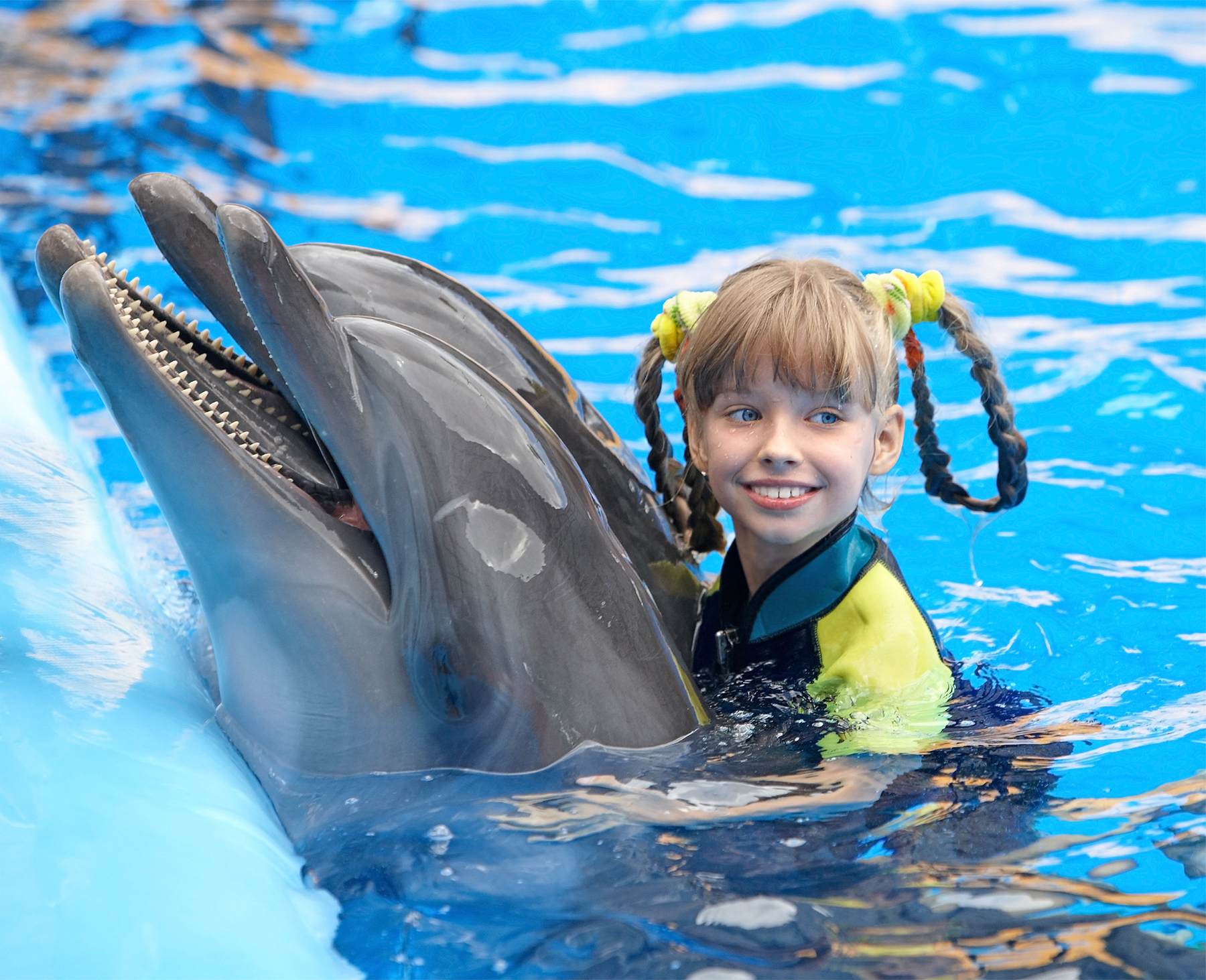
Do you know what one of the most popular tourist excursions in the Caribbean has been for quite a few years – perhaps even decades?
It’s swimming with dolphins!
Dolphins are considered to be the animal closest to human beings in terms of intelligence – even showing the unique ability to pass on traditions through generations. And even with our remarkable similarities, federal officials are making the case that humans should not be using dolphins as objects of our own entertainment.
A Situation in the Spotlight
Tourists have been flocking to Hawaii to swim with wild dolphins. This behavior has caused officials to consider a ban on humans swimming with dolphins there. The proposed rules announced by the NOAA Fisheries seeks to ban swimming or coming within 50 yards of Hawaiian spinner dolphins. Popular activities like dolphin watching in boats or snorkeling with dolphins would also effectively be banned.
Federal officials believe the presence of swimmers is negatively affecting the quality of life of dolphins by disrupting their natural behavior in the ecosystem.
Tour operators are obviously upset by this action because it would destroy their industry.
Dolphin Discoveries in Hawaii notes that “it would be the end of legitimate dolphin swimming” because the company “couldn’t offer the people the quality interaction that they expect.”
The case that experts are making for a ban on swimming with dolphins is based on lots of things.
Here are a couple of them:
Studies have shown that many dolphins have suffered “psychosis” – which is a behavior that is not unheard of in marine mammals that are forced to swim in small pens all day long. These animals are under extreme pressure to perform – a situation that can make them dangerous to humans. The dolphins get frustrated – you could even say angry – from doing the same motions, hearing the same speech, and seeing the same signals over and over. Their reactions usually range from aggression towards guests to knocking over food buckets.
The frustration and boredom have even caused some female dolphins to prevent their new babies from breathing by keeping them from coming to the surface. The trainers felt the mothers did this because they didn’t want their babies to live in captivity – but there is no “proof” that this is their response to the lifestyle.
According to a World Animal Protection/Humane Society of the United States, often dolphins in captivity are routinely given antibiotics and ulcer medications, are in need of vitamin supplements because they are being fed nutrient-deficient frozen fish and have a history of premature death from a variety of causes. Dolphins in captivity often live in enclosures that are less than 1 percent of their natural habitat and expose them to the sun (causing sunburn) because they are much shallower than their natural habitat. Dolphins in captivity are usually isolated for training purposes and often exposed to polluted water.
Of course, there can be organizations with captive dolphins who are exceptions to this general behavior where “space” is available and successful dolphin births have taken place with few deaths.
Even with those who believe they are positive “players” and [rpvode adequate space, reEarth – a Bahamian grassroots organization – is against the developmental of so-called dolphinariums.
Captive-bred dolphins, notes reEarth, are losing their instincts. The organization claims that these groups are creating a whole substructure of animals that have no way of living in the wild, going so far as to say that people’s desire to be around dolphins is killing them.
Our Similarities
There are several similarities between dolphins and humans:
We are social animals.
Dolphins, like humans, have families and social groups. In dolphins, we call these social groups pods.
We speak in different dialects.
Dolphins’ use different dialects in the way they speak. You could compare this to the accents we have across our country.
We give each other names.
They may not be the same as our names, but studies do show that they have personalized whistles for members of their pod.
Our brains are similar.
When scientists compare the skulls of dolphins to apes, they found that in terms of size relative to body, dolphins have a larger brain making their brain to body ratio just below that of humans. While this is impressive, what you can do with that brain is actually more important. Dolphins are capable of some pretty amazing things. They are actually better (or maybe faster is more accurate) at communicating than humans.
We recognize ourselves in mirrors.
Unlike dogs and cats which look into mirrors with confusion, dolphins know what they’re looking at. They not only recognize themselves, but recognize changes in their appearance. They have an amazingly complex form of self-awareness.
We have similar genetics.
Studies of the human genome and the dolphin genome show intense similarities. There are a few chromosomal rearrangements that have changed the way the genetic material is put together according to a Texas A&M scientist.
Our Differences
Without getting into minute physical detail, some basic differences between humans and dolphins are:
We’re anatomically different.
Dolphins are completely hairless with muscular, torpedo-like bodies.
Humans have arms and legs, while dolphins have flippers and tails.
The way we make sounds.
Dolphins click.
Humans talk.
Where we live.
Dolphins live in water.
We live on land.
Be aware of the dangers.
We imagine that every interaction between humans and dolphins would bring nothing but harmony but that outcome can be far from guaranteed. Although they are usually not aggressive, dolphins are unpredictable, wild animals. Humans can abuse their power and inflict stress, illness, and disease on them.
Researching and understanding risks, dangers, and even potential benefits is vital to any decision to swim with dolphins.
Little Otter Swim School’s team members are passionate about teaching kids to swim and be safe as they enjoy the water. Learn more about what makes Little Otter different.


Conversations